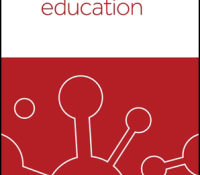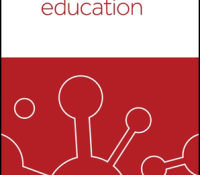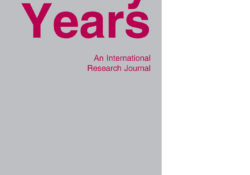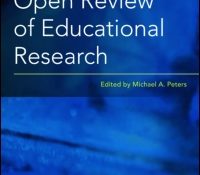eric.ed.gov har udgivet: In this study we analyze and contrast approaches that future high school math teachers show when solving word problems with the use of pencil and paper and later, with the use of a Dynamic Geometry System (DGS). The resources, representations, strategies and forms of mathematical reasoning that the participants exhibit when they use GeoGebra in the process of problem solving are analyzed. The results show that the use of the tool favors the dynamic exploration of the concepts involved, the formulation of conjectures and the search for different arguments to validate the solution. [This paper is provided in both Spanish and English. For the complete proceedings, see ED606531.] Link til kilde
Like this:
Like Loading...
tandfonline.com har udgivet en rapport under søgningen „Teacher Education Mathematics‟: Abstract Abstract Supporting the 21st-century learners’ instructional needs is a trend of today’s educational system. This educational design research aimed to develop a Digital Interactive Math Comics (DIMaC) as an instructional material envisioned to meet these learners’ needs to a better understanding of Mathematics concepts. This employed the ADDIE framework for instructional material development design. There were 425 randomly chosen students who took the validated and acceptable with 0.7888 Cronbach’s alpha researcher-made General Mathematics Competency Test. This was done to identify the least learned skills and be the basis for design and development. The initial storyline with the Mathematics contents integrated were validated by the set of experts before the electronic illustrations and coding took place. The initial outputs of… Continue Reading →
Like this:
Like Loading...
tandfonline.com har udgivet en rapport under søgningen „Teacher Education Mathematics‟: Abstract Formulae display:?Mathematical formulae have been encoded as MathML and are displayed in this HTML version using MathJax in order to improve their display. Uncheck the box to turn MathJax off. This feature requires Javascript. Click on a formula to zoom. Abstract Technological innovation in science provides complementary tools for exploring new teaching strategies within a pedagogical framework that promotes interaction between the teacher and the learner. This work is based on the implementation of a computer application modeling crystallographic material structures, in order to identify and study the different crystalline structures and their characteristics, based on the techniques of three-dimensional modeling covering the OpenGL library and the Euler rotation matrices, and developed by the C # programming language. The… Continue Reading →
Like this:
Like Loading...
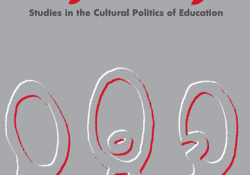
tandfonline.com har udgivet en rapport under søgningen „Teacher Education Mathematics‟: ABSTRACT ABSTRACT What are the current challenges and opportunities for bringing actor-network theory (ANT) into issues-based science education? This article discusses experiences gained from introducing an educational version of ANT deploying digital technology into an upper secondary school science class. This teaching innovation, called controversy mapping, has been pioneered in different contexts of higher education before being adapted to school education. Experimenting with controversy mapping in a Swedish science class raised both conceptual and practical issues. These centre on: (1) how ANT-inspired controversy mapping redesigns the citizenship training enacted by institutionalized approaches to issues-based education as socioscientific issues (SSI); (2) how controversy mapping reconfigures the interdisciplinarity of issues-based science education; and (3) how controversy mapping displaces scientific literacy and knowledge… Continue Reading →
Like this:
Like Loading...
eric.ed.gov har udgivet: Siyavula is known as a pioneer developer of high-quality free digital maths and science textbooks to address resource gaps and disadvantage in South African schools. This case study identifies the success factors which could be replicated in other contexts. Siyavula has developed expertise in digital developing, editing and improving maths and science workbooks and teachers‛ guides and distributing them in multiple digital and mobile formats for free. In 2013 the government took the free texts and sponsored the printing and distribution of c500K copies of Grade 4-6 titles, saving the government approximately USD$83.5 Million for each of the 12 books (student workbook and teacher guide in both English and Afrikaans). The collaborative authoring system is identified as instrumental to the success of the project to address under-resourced… Continue Reading →
Like this:
Like Loading...
tandfonline.com har udgivet en rapport under søgningen „Teacher Education Mathematics‟: ABSTRACT ABSTRACT The traditional exam has a strong holding within Norwegian higher education and is very often the preferred way of assessing students. Digital technology opens up for alternatives to the traditional exam, but so far focus has predominantly been on exchanging pen and paper with personal computers within the traditional framework. Digital alternatives may come in conflict with existing law governing teaching and assessment at university, as the law was written at a time when digital technology did not exist. We present data from a workshop in which 48 individuals from 11 institutions, academics as well as administration, were asked to identify and discuss challenges related to the introduction of digital alternatives. A case study strategy was considered appropriate… Continue Reading →
Like this:
Like Loading...
tandfonline.com har udgivet en rapport under søgningen „Teacher Education Mathematics‟: ABSTRACT ABSTRACT In mathematics education, digital tools have been used to enhance young children’s understanding of specific subject matter. In such implementations, the digital tool can replace, amplify or transform ‘ordinary’ mathematics teaching. In an initial study, systematization and duplication were identified as critical when young children were to solve a combinatorial task. Therefore, a digital version of the task was developed and combined with a non-digital version, to introduce the use of dual artefacts. The digital version of the task enabled the children to visually explore systematization as well as the principle of completion. After using this digital version of the task, the children’s written records became more systematic and included fewer duplications. We conclude that the digital version… Continue Reading →
Like this:
Like Loading...
eric.ed.gov har udgivet: It is a well known fact that there is a discrete group of pupils with severe problems in the acquisition of mathematical skills. These problems go beyond a quantitative range, but differ qualitatively from the ways the pupils gain mathematical knowledge from their teachers in the classroom. The central thesis of this survey is the development of the educational digital game the „Four Forces‟, and the teachers‛ perceptions concerning whether the specific digital game reduce mathematic and memory difficulties in students with intellectual disabilities. This was achieved by comparing and contrasting the teachers‛ perceptions on this particular issue through questionnaires via e-mail. Through the survey findings it has been observed that special needs teachers have similar perceptions about the digital math games, which they agree that they… Continue Reading →
Like this:
Like Loading...
tandfonline.com har udgivet en rapport under søgningen „Teacher Education Mathematics‟: ABSTRACT ABSTRACT Dewey was perhaps the foremost theorist and advocate of participatory democracy as an ethical ideal based on a belief and faith in human experience as a general theory of education that would generate the requisite aims and methods for what he called ‘organized intelligence’ and what we might call today ‘collective intelligence’ – that is, as he says, ‘faith in democracy is all one with faith in experience and education’. In this paper we revisit Dewey’s Democracy and Education. An introduction to the philosophy of education (1916/2001) in order to evaluate the growth and development of democracy against the decline of social democracy in the West. We identify the three turns which separate democracy of Dewey’s times and… Continue Reading →
Like this:
Like Loading...
tandfonline.com har udgivet en rapport under søgningen „Teacher Education Mathematics‟: Abstract Abstract This study investigates the effects of Digital Learning Material (DLM) including instructional clips, online guidance, structuring of content, and a collaboration tool on students’ mathematics learning in Dutch vocational education. A pretest–posttest design was used. Apprenticeship students were asked to complete assignments and to discuss them with their peers and the online teacher. The results showed that DLM can enhance students’ mathematics learning in vocational education. The learning enhancement was mostly due to the use of instructional clips and structuring of the content of the mathematics tasks. Elaborations of these results, implications, limitations and recommendations for further research are provided. Link til kilde
Like this:
Like Loading...
